Welcome Maria!

Exciting Announcement!
Join us in welcoming our newest team member, Maria Andersson to the Ebba Biotech family! We’re thrilled to have Maria on board as our Team and Sales Lead, bringing a genuine excitement to push Ebba Biotech forward in the Life Science industry.
About Maria
I’m originally from the northern part of Sweden but relocated to Uppsala in 2018 to pursue a Bachelor’s in Biomedicine. After three years, my curiosity for the business side of the life science industry led me to the Master’s program in Bioentrepreneurship at Karolinska Institutet, from which I graduated this June. I’m now very excited for the journey ahead at Ebba Biotech, where I can apply my knowledge and continue learning from the talented team already working in the company.
- I don’t drink coffee
- I ran the Stockholm Marathon this summer (it was the first and also the last time I did that)
- I watch a lot of reality TV shows, especially Swedish ones
Planning to Order from Ebba Biotech? Here’s What You Need to Know!

Lead times at Ebba Biotech range from 2-5 business days - but you will always receive a confirmation email from our team to keep you informed! We ship with FedEx International Priority from Sweden - so most orders arrive within 2 days.
At Ebba Biotech, our dedicated team is here to support you every step of the way. If you have any questions or need further assistance, please don’t hesitate to contact us. We’ve got you covered!
Welcome Sandro Schmidli
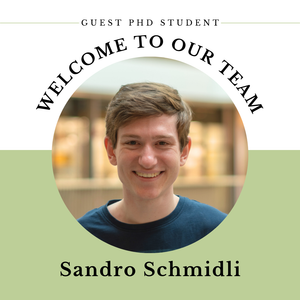
We are excited to have Sandro as our Guest PhD student for the entirety of August.
As a Guest PhD student, Sandro will be learning about the day-to-day operations of a start-up like Ebba Biotech by sampling all the various roles within our team.
About Sandro
Sandro is a cell biologist in the last year of his PhD studies at Karolinska Institutet. He originally comes from Zug and arrived in Stockholm in 2020 after his training to become a pharmacist. His research focuses on the understanding of how non-coding RNAs are involved in DNA repair.
- He enjoys traveling and photography!
- Chocolate is his candy of choice!
- In winter he likes to ski!
Welcome Sandro!!
Who to contact
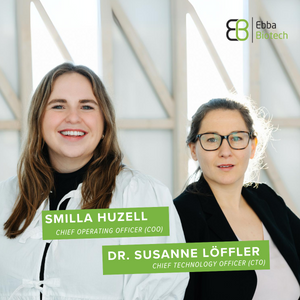
They will be able to help you with any inquiries related to the Ebba Biotech business structure or about any developments that we have going on.
Embracing the summer vibes
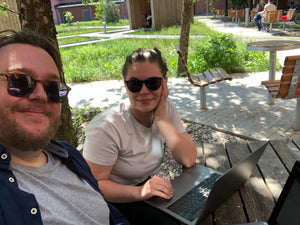
It has been the perfect setting to stay productive while enjoying the sunshine and fresh air.
Dr. Reina Tanaka about Carbotrace Testing Service
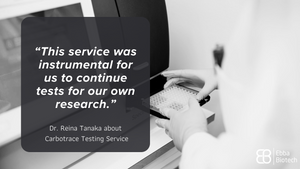
Ever wondered what our users think about our products and services?
Check out the testimonials from our customers to gain valuable insights into their experiences.
Read the full testimonial from Dr. Reina Tanaka alongside other customer testimonials here
Call For Speakers!

If you’re interested in sharing your insights with a broader audience - look no further! We’re looking for passionate Ebba Biotech users to lead a webinar and showcase their work with Ebba Biotech products
Let’s collaborate and inspire the scientific community together - get in touch!
Amytracker dilution
Are you curious about how Amytracker actually works and if it can apply to your research?
Look no further! Here you can get a quick overview of how Amytracker binds to amyloid aggregates.
At Ebba Biotech, our dedicated team is here to support you every step of the way. If you have any questions or need further assistance, please don’t hesitate to contact us here.
EuroBiofilms 2024
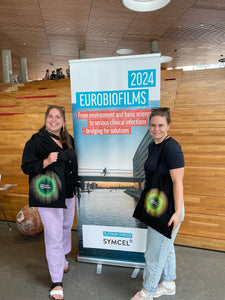
On Saturday our team rounded off another successful conference in Copenhagen at EuroBiofilms 2024.
Thank you to the organisers for facilitating such an outstanding conference! We were able to connect with new researchers and also see the fantastic work that our users are doing with EbbaBiolight. In fact, it was an added benefit being able to see some interesting EbbaBiolight images from the CytaCoat team during the poster session!
Again, it was an exciting treat to see how many of you wanted to represent Ebba Biotech at home with our fabulous tote bags! Can't wait to see you all again in 2026 in Portugal!
Glad Midsommar!

Or “Happy Midsummer” to our foreign fans! The team at Ebba Biotech kicked off our summer with a pizza party in the Swedish sunshine and would like to wish you all a fantastic summer.
Our office will be open throughout the season, so there is always going to be someone ready to answer your questions or assist with orders.
Have a wonderful summer ahead!
How to store our optotracers
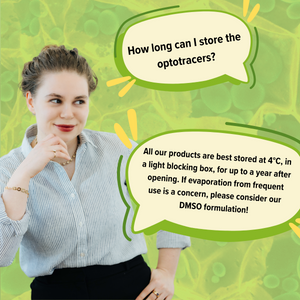
Just purchased our product and wondering about how to store it?
No worries! At Ebba Biotech, our dedicated team is here to help you every step of the way. If you have any questions or need further assistance, please don’t hesitate to contact us here. We’ve got you covered!
Exciting Discovery Alert!
β-2-microglobulin is a protein present in all nucleated cells and is elevated in many tumors or inflammatory diseases. It is well known that the protein has a propensity for aggregation. A study published in the journal Immunity by Hofbauer et al. has investigated the role of β-2-microglobulin aggregates on the activation of inflammatory processes in Multiple Myeloma. Amtracker 480 has been used in the study to detect amyloid aggregates of β-2-microglobulin in live macrophages and detected by Flow Cytometry.
Do you want to learn more? Read the publication here.
Image: The structure of β-2-microglobulin in its native and fibrillar states. Image from Figure 4 AB by Iadanza et al. (2018) Nature Communications, 9(1), 4517 (CC BY 4.0).
The perfect dilution for Amytracker
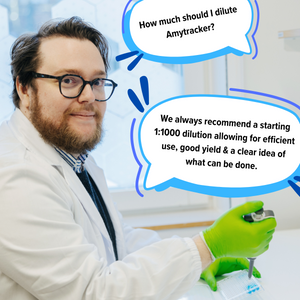
Did you just purchase your Amytracker product and wondering about the perfect dilution? No worries! At Ebba Biotech, our dedicated team is here to help you every step of the way. If you have any questions or need further assistance, please don’t hesitate to reach out to us here. We’ve got you covered!
Did you know that Protein Aggregation can play a role in wound healing?
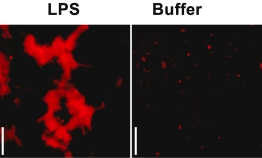
A publication in iScience by Jitka Petrlova from Artur Schmidtchen’s group at Lunds University discovered an interesting connection between Lipopolysaccharides (LPS) and the wound healing process. The researchers found that LPS, the outer membrane component of gram-negative bacteria, can induce protein aggregation in wounds and isolated wound fluids. This process would, in turn, reduce inflammation and contribute to wound healing. To detect the formation of amyloid-like aggregates, they used Amytracker 680 and observed under a fluorescent microscope.
Do you want to learn more details about how Amytracker was used in this publication? Click here
Image: Protein aggregation in acute wound fluids (AWFs) in the presence and absence of LPS. Fluorescence microscopy images of AWFs +/- LPS (100 μg/ml) labeled with Amytracker 680 in red. An increase in the Amytracker 680 signal indicates aggregates in AWFs after the addition of LPS. Image from Figure 2D by Petrlova et al. (CC BY 4.0)
Prof. Fabrizio Chiti about Amytracker 630
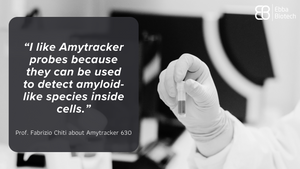
Did you ever wonder what our users think about our products?
Or perhaps you’re looking to learn more before making a purchase decision? Look no further! Check out the testimonials from our customers to gain valuable insights into their experiences.
Read the full testimonial from Prof. Chiti and Others.
The Team enjoying Swedish Kardemummabullens dag
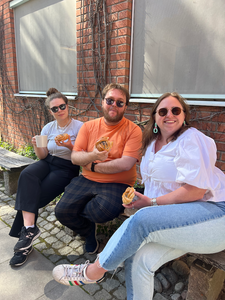
Happy Kardemummabullens dag (Cardamom Bun Day for our non-swedish speakers)
Ebba Biotech - just like all Swedes - takes sweet treats seriously and as such finds it pertinent to celebrate the sweet small things in life. As such, our team came together to enjoy some classic Swedish fika in the sun.
By Scientists for Scientists
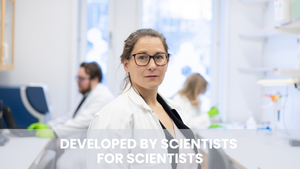
At Ebba Biotech, our slogan "By Scientists for Scientists" isn’t just a tagline, it’s genuinely our truth. We’re not just selling our optotracer products; we intimately understand the ins-and-outs of the technology. This profound knowledge ensures our solutions are tailored to meet the needs of our customers and fellow scientists.
Don’t hesitate to contact our team with any inquiries you might have. We’re here to help! Contact us here
Learn more about Carbotrace in our Webinar with Dr. Zitzmann
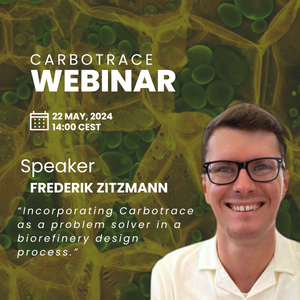
We are excited to be joined by Dr. Frederik Zitzmann from the University of York presenting his research using Carbotrace. The webinar highlights how adopting novel methods - such as visualization and analytical techniques with Carbotrace - is revolutionizing the biorefinery industry working towards a more sustainable future with more sustainable material.
Secrets to business success

What’s the secret to business success?
In our case, strong customer relations is the key. Engaging with our customers isn’t just a strategy, it’s our passion. Your feedback fuels our growth and helps us assist you better. Please don’t hesitate to reach out to our team!
Microbiology Society Annual Conference 2024
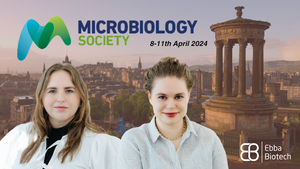
👏 That's a wrap on the Microbiology Society Annual Conference 👏
Thank you to all the participants for making this such a successful conference for Emile and Smilla! It was fantastic to introduce you all to the EbbaBiolight molecules and optotracing technology 🦠🔬 To all our current customers, thank you for showcasing your work all throughout the conference - special shout out to longtime user Ashraf Zarkan presenting Urinary Extracellular Vesicles against E.coli biofilms using EbbaBiolight 🧫 We were also so pleased to see that you all enjoyed all our merch (👀👜 tote bags 👜👀) so that you too can show off Ebba Biotech wherever you go! For anyone who missed out on the "Passport to Prizes" question, EbbaBiolight has been featured in 1️⃣ 4️⃣ publications since its launch in the summer of 2020 🎉 But let us know if you want to be part of increasing this number moving forward 😜
Happy Customers
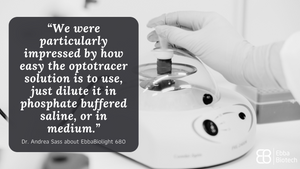
🌟 Do you ever wonder what users think about EbbaBiolight? 💭 Or perhaps you’re looking to learn more before making a purchase decision? 🛍
Check out our testimonials on our website to gain valuable insights into the experiences of our customers.💡
In case you missed it - April is Parkinson’s Awareness Month!
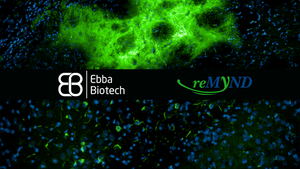
Did you know that, according to the Parkinson’s Foundation, more than 10 million people worldwide are living with Parkinson’s disease? Here at Ebba Biotech we are constantly in discussions with academics and industries that are actively researching and developing therapies to tackle Parkinson’s disease using our Amytracker product family as a visualisation tool.
One company we would like to highlight is reMYND! The team at reMYND have been utilising the Amytracker 520 variant to enhance their imaging in mice - just look at the images below and hear from reMYND themselves!
“Focusing on the top image, we peer into the injection site (dorsal striatum), where pathogenic fibrils lurk (using DAPI as a nuclear stain). But the story doesn’t end there -as the pathology spreads throughout the mouse brain, it infiltrates crucial regions like the amygdala (lower image). With exceptional precision, Amytracker detects Lewy Bodies and Lewy Neurites, pivotal entities in Parkinson’s disease pathology. Paving the way for quantification of drug efficacy or target engagement studies for our clients.”
We are excited to follow reMYND as they continue to create positive change in the neurodegenerative field. To learn more about their work click here
Exciting breakthrough in neuroscience research!
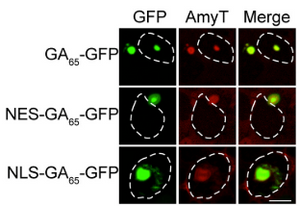
A repeat expansion in the C9orf72 gene is the most frequent cause of ALS and FTD. Researchers from Max Planck Institute of Biochemistry and University Medical Center Gröningen revealed the molecular mechanism behind Dipeptide Repeat Proteins (DRP) cytotoxicity in their publication in the journal eLife. They used Amytracker 680 to localize and characterize both cytoplasmic and nuclear DRP aggregates.
Image:🔬HEK293 cells transfected with the indicated constructs and labeled with Amytracker 680. (AmyT in red, Poly-GA DPRs in green, nuclear membrane indicated by white dashed lines). Frottin et al. (Fig. 1D) (CC BY 4.0)
Ebba Biotech is making waves in the world of research

Our products are featured in over 65 publications in various high-impact journals, we’re proud to share our contributions to advancing scientific knowledge! From groundbreaking discoveries to innovative technologies worldwide.
Curious to learn more? Reach out to us today!
Calling KI PhD Students!

Yesterday, our COO Smilla connected with lots of engaged students at the Mingle Event for the KI Careers Internship Program, showcasing the exciting internship opportunities at Ebba Biotech. 👨🔬
